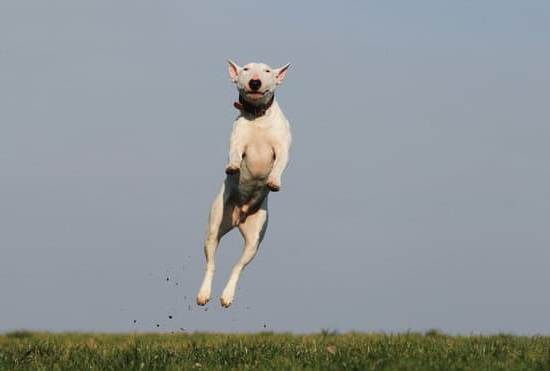Training a neglected dog can be a rewarding and transformative experience, but it does come with its own set of challenges. In this article, we will explore the difficulties faced when training a neglected dog and discuss the importance of patience, compassion, and consistency in the training process.
Neglected dogs often have physical and emotional scars from their past experiences. This means that they may have never received any basic training or socialization, making it harder for them to adjust to new routines and environments. Additionally, neglected dogs may display fear, anxiety, or even aggression due to their previous neglect.
To successfully train a neglected dog, it is crucial to assess their physical and emotional state. Understanding any underlying medical issues caused by neglect is important for their overall health. Equally important is understanding the dog’s emotional state, fears, and anxieties resulting from past neglect. By identifying these issues, we can tailor our training approach to address their specific needs.
Building trust and bonding with a neglected dog is essential before embarking on further training. Many neglected dogs have never experienced love or positive human interaction. We will discuss techniques and strategies for establishing trust with them using positive reinforcement techniques such as treats and affection.
Overall, training a neglected dog requires empathy, time, and consistency. With patience and a structured routine, you can help your furry friend overcome their past traumas and become a well-behaved companion. Stay tuned for the rest of this article where we will delve into assessing the dog’s physical and emotional state as well as providing guidance on building trust and basic obedience training for neglected dogs.
Assessing the Dog’s Physical and Emotional State
When training a neglected dog, it is crucial to first assess their physical and emotional state. Neglected dogs may have experienced a lack of proper nutrition, healthcare, and exercise, which can have long-lasting effects on their overall health. Additionally, these dogs often suffer from emotional trauma due to past neglect, resulting in fear, anxiety, and other behavioral challenges. By understanding the dog’s physical and emotional needs, trainers can tailor their approach to provide the necessary care and support.
Evaluating the Dog’s Physical Condition
One of the first steps in assessing a neglected dog is to evaluate their physical condition. Take note of the dog’s body weight, skin condition, coat quality, and dental health. Neglected dogs may have malnutrition or medical issues that require attention from a veterinarian. It is essential to address any underlying medical problems before initiating training. A healthy dog is more likely to respond well to training efforts.
Apart from these visible signs, observe the dog’s energy levels during activities such as walking or playing. Pay attention to signs of pain or discomfort, limping, difficulty breathing, or any other indicators that may suggest physical issues related to neglect. Seeking professional veterinary advice allows for a comprehensive assessment of the dog’s current health status and enables trainers to make informed decisions regarding their training plan.
Understanding Emotional Trauma from Neglect
Neglected dogs often suffer from emotional trauma caused by abusive or neglectful experiences in their past. Understanding this trauma is crucial when developing a training plan. Observe the dog’s body language for signs of fear or anxiety such as cowering, trembling, tail tucking, or avoiding eye contact.
To help address their emotional needs:
- Create a safe environment: Provide a quiet and comfortable space where the dog can retreat if they feel overwhelmed.
- Build trust gradually: Allow the dog to approach and interact with you at their own pace. Avoid forcing them into uncomfortable situations.
- Establish a predictable routine: Dogs recovering from neglect often find comfort in predictability. Maintain consistent schedules for feeding, exercise, and training sessions.
By assessing both the physical and emotional state of neglected dogs, trainers can better understand their individual needs and tailor their training approach accordingly. Patience, compassion, and consistency are essential when working with these dogs, as they may require extra time and support to overcome the effects of neglect.
Building Trust and Bonding with the Neglected Dog
Building trust and bonding with a neglected dog is a crucial step in their rehabilitation process. Neglected dogs may have experienced trauma and lack socialization, leading to mistrust and fear. However, with patience, consistency, and the right techniques, it is possible to establish a strong bond with these dogs.
Understanding Their Background
Before starting the bonding process, it is important to learn about the dog’s background and any potential triggers or fears they may have developed due to neglect. Spend time observing their body language and behavior to understand what makes them feel uncomfortable or anxious. This understanding will allow you to tailor your approach and create a safe environment for the dog.
Using Positive Reinforcement
Positive reinforcement is a powerful tool in building trust with neglected dogs. Use treats, toys, or verbal praise as rewards for desired behavior. Avoid punishment or using forceful methods as it can further damage their trust. Celebrate even small successes during training sessions to boost their confidence and ensure they associate you with positive experiences.
Establishing Routine and Predictability
Neglected dogs often crave structure and routine as it provides stability in their lives. Establishing a consistent feeding schedule, exercise routine, and designated quiet spaces can help them feel secure and build trust over time. Stick to this routine as much as possible and gradually introduce new experiences that are positive for the dog.
Bonding Activities
Engaging in bonding activities such as interactive play sessions or gentle grooming can help strengthen the relationship between you and the neglected dog. These activities should always be approached at the dog’s pace, respecting their boundaries and comfort level. Gradually increase touch contact by starting with areas they are comfortable being touched before moving on to more sensitive areas over time.
Basic Obedience Training for Neglected Dogs
When it comes to training a neglected dog, basic obedience training is an essential component of their rehabilitation process. Teaching fundamental commands such as sit, stay, come, and down not only helps the dog become more manageable and well-behaved but also builds their confidence and establishes trust between the dog and their owner. In this section, we will provide step-by-step instructions for basic obedience training specifically tailored to neglected dogs.
- Start with Sit: The sit command is one of the simplest yet most important commands to teach a neglected dog. Begin by holding a treat close to the dog’s nose while moving your hand upward, causing their head to follow the treat and their bottom to lower automatically.
Once they are in a sitting position, say “sit” clearly and give them the treat as a reward. Repeat this process several times until they associate the word with the action. - Practice Stay: The stay command is vital for ensuring your neglected dog’s safety in various situations. After commanding your dog to sit, take a step back with your open hand extended towards them while firmly saying “stay.” If they remain still without moving towards you, immediately offer praise or treats as rewards. Gradually increase the duration of stay before releasing them with another command like “okay” or “free.”
- Master Come: For a neglected dog that may be skittish or anxious, teaching them to come when called can help build trust and reinforce positive associations. Start by putting a long leash on your dog and allowing them some freedom to explore while keeping hold of the leash.
Call their name followed by “come” in an encouraging tone and gently pull the leash towards you if needed. Once they reach you, praise them and reward them with treats or affection. - Teach Down: The down command enables you to control your neglected dog’s energy levels while also promoting relaxation and submission. Begin with your dog in a sitting position, hold a treat against their nose, and slowly lower your hand towards the ground while saying “down.”
As they follow the treat with their nose, it should naturally bring them into a laying down position. Once they are all the way down, reward them with treats and praise.
During obedience training sessions for neglected dogs, remember to keep training sessions short and frequent to maintain their focus and prevent them from becoming overwhelmed. Utilize positive reinforcement techniques such as treats, verbal praise, and gentle physical affection to motivate and encourage their progress.
Consistency is key in building new behaviors, so be patient and understanding if they struggle at first. Over time, you will witness significant improvements in their obedience skills as well as an enhanced bond between you and your once-neglected dog.
| Command | Training Steps |
|---|---|
| Sit | – Hold a treat close to the dog’s nose while moving your hand upward
|
| Stay | – Command your dog to sit
|
| Come | – Put a long leash on your dog
|
| Down | – Start with your dog in a sitting position
|
Addressing Fear and Anxiety in Neglected Dogs
Neglected dogs often suffer from deep-seated fears and anxieties as a result of their past experiences. These emotional challenges can greatly impact their ability to learn and respond positively to training. It is crucial for owners or trainers of neglected dogs to address these fear and anxiety issues in order to facilitate their rehabilitation and create a harmonious bond with them.
Common fear and anxiety issues observed in neglected dogs include fear of people, loud noises, other animals, new environments, or even handling. These fears can manifest as excessive barking, trembling, cowering, or aggression. In order to address these issues effectively, it is important to approach the training process with patience, empathy, and a gradual desensitization approach.
One technique that can be helpful in addressing fear is counter-conditioning. Counter-conditioning involves changing the dog’s negative association with a certain trigger into a positive one. For example, if a neglected dog is fearful of unfamiliar people, gradually introducing them to friendly and calm individuals while offering treats and rewards can help the dog form a positive association with human interaction.
Gradual exposure is another important aspect of addressing fear and anxiety in neglected dogs. It is important not to overwhelm the dog by forcing them into situations that trigger their fears. Instead, start with small steps and gradually increase difficulty as the dog becomes more comfortable. For example, if the dog fears being left alone due to past neglect, start by leaving them alone for short periods of time while providing distractions like puzzle toys or treats.
Building trust through consistent positive reinforcement is also essential when working with fearful or anxious neglected dogs. Rewarding calm and confident behavior with praise, treats, or playtime helps reinforce positive associations and boosts the dog’s confidence.
| Techniques for Addressing Fear and Anxiety |
|---|
| Counter-conditioning |
| Gradual exposure |
| Consistent positive reinforcement |
By employing these techniques and providing a safe and supportive environment, neglected dogs can learn to overcome their fears and anxieties. It is important to remember that each dog is unique, and what works for one may not work for another.
Professional help from trainers or behaviorists experienced in working with neglected dogs should be sought if the fear and anxiety issues persist or worsen despite consistent training efforts. With patience, understanding, and appropriate training techniques, neglected dogs can experience significant progress in their emotional well-being and become loving companions.
Socializing a Neglected Dog
Socialization is a crucial component in the rehabilitation process of a neglected dog. Neglected dogs often lack exposure to positive social experiences, making them fearful and anxious in new environments or around unfamiliar people and animals. However, with patience and the right approach, it is possible to help these dogs overcome their fears and learn to trust others.
One effective technique for socializing a neglected dog is gradual exposure. Start by introducing the dog to new environments in a controlled manner. Take the dog on short walks to different places, gradually increasing the length of time spent outside. Allow the dog to explore its surroundings while providing comfort and reassurance. This helps the dog associate new environments with positive experiences.
It is also important to introduce the neglected dog to people and other animals in a positive and controlled manner. Begin by inviting calm, gentle individuals into your home who can interact with the dog using treats, toys, or praise as positive reinforcement. Encourage family members or friends to visit regularly so that the dog becomes comfortable with different people over time.
When introducing other animals, start with calm and friendly dogs in neutral territory. Let them sniff each other at a distance and gradually decrease the space between them while maintaining control of both dogs on leashes. Reward both dogs for displaying relaxed behavior or positive interactions. Keep these early introductions short and gradually increase their duration as both dogs become more comfortable with each other.
With consistent socialization efforts, neglected dogs can become more confident and comfortable in various social situations. Remember to always prioritize their safety and well-being during socialization exercises, going at their pace and respecting their boundaries.
By actively working on socializing a neglected dog, you are not only helping them overcome their fears but also opening up opportunities for a more fulfilling life filled with positive social interactions.
Addressing Special Behavioral Challenges in Neglected Dogs
When training a neglected dog, it is important to address and overcome any special behavioral challenges that may arise as a result of their past neglect. Neglected dogs often exhibit behaviors such as aggression, fear, or separation anxiety, making it crucial to approach their training with patience and understanding.
One common behavioral challenge observed in neglected dogs is aggression. Neglect can lead to feelings of fear or insecurity, causing the dog to react defensively or aggressively towards people or other animals. It is essential to address this behavior early on and work with a professional trainer who has experience dealing with aggressive dogs. They can guide you on implementing positive reinforcement techniques and behavior modification strategies tailored to your dog’s specific needs.
Separation anxiety can also be a significant challenge for neglected dogs. Due to their history of neglect, these dogs may have developed a strong attachment to their caregivers, leading them to become anxious or distressed when left alone.
To help alleviate separation anxiety, gradually introduce your dog to being alone by starting with short periods of time and gradually increasing the duration. Providing mental stimulation through interactive toys or puzzle games can also help distract them and make alone time less stressful.
Additionally, many neglected dogs exhibit fear-based behaviors due to their difficult past experiences. They may be fearful of certain objects, sounds, or environments. It is essential to provide a safe and controlled environment for the dog while gently exposing them to stimuli that trigger their fear response. This process, known as desensitization, involves gradual exposure combined with positive reinforcement techniques. With time and patience, neglected dogs can learn to overcome their fears and gain confidence.
By addressing these special behavioral challenges in neglected dogs through training techniques specifically tailored to their needs, we can help them on their journey towards rehabilitation and recovery. It is important to remember that each dog is unique and may require different approaches and levels of support. Seeking professional help from trainers or behaviorists who specialize in working with neglected dogs can be invaluable in addressing these challenges effectively.
Ultimately, with the right training and guidance, neglected dogs can obtain a new lease on life. By providing them with the tools to overcome their behavioral challenges, we can help them become well-adjusted and happy companions. A patient and understanding approach, coupled with professional support, will pave the way for success in training neglected dogs and allowing them to thrive in their new homes.
Consistency and Patience
Consistency and patience are essential elements when it comes to training a neglected dog. These dogs have likely experienced inconsistency and unpredictability in their past, so it is crucial to provide them with a structured and consistent routine to help them feel safe and secure.
One key aspect of consistency is setting clear boundaries and expectations for the neglected dog. This means establishing rules regarding behaviors such as jumping, barking, or biting, and consistently reinforcing these rules. For example, if you do not want your dog to jump on people, make sure everyone in the household follows this rule consistently. Consistency will help the neglected dog understand what is expected of them and reduce confusion or frustration.
Patience is another essential element in training a neglected dog. It’s important to remember that these dogs may have deep-seated fears, anxieties, or traumas from their past experiences. As a result, progress in their training may be slower compared to other dogs. It’s crucial to be patient and understanding, allowing the dog to progress at their own pace. Pushing the dog too hard or becoming frustrated can inhibit their progress and cause setbacks.
In addition to consistency and patience, maintaining a positive mindset throughout the training process is vital. Neglected dogs might present unique challenges during training sessions, but focusing on small achievements and celebrating progress will go a long way in building confidence for both the trainer and the dog. It’s important not to dwell on setbacks but rather celebrate each step forward, no matter how small it may seem.
Remember that every neglected dog has its own journey toward recovery and rehabilitation. Training a neglected dog requires time, dedication, love, and understanding. With consistency, patience, and a positive mindset, you can aid in transforming the life of a neglected dog by providing them with the love, care, structure they deserve.
Seeking Professional Help and Support
Training a neglected dog can be a challenging and complex process, so it’s important to consider seeking professional help and support. While you may be able to make progress on your own, the expertise and guidance of a professional trainer or behaviorist can greatly enhance the training journey for both you and your dog.
One option for seeking professional help is to hire a certified dog trainer who specializes in working with neglected dogs. These trainers have experience dealing with the specific challenges that arise from neglect and can provide targeted strategies and techniques to address them. They will assess your dog’s individual needs, create a personalized training plan, and guide you through each step of the training process.
Alternatively, you may choose to consult with an animal behaviorist who has in-depth knowledge of canine behavior. Behaviorists can help identify any underlying emotional or psychological issues that may be affecting your neglected dog’s behavior. With their expertise, they can design a comprehensive behavior modification plan that addresses these specific challenges.
In addition to professionals, there are also support groups and online communities available where individuals facing similar challenges can find encouragement, advice, and solidarity throughout their training journey. These groups provide an opportunity to connect with others who understand the unique struggles associated with training neglected dogs. You can share experiences, ask questions, seek guidance, and offer support to one another.
Remember that seeking professional help or joining a support group does not mean you have failed as a trainer; rather, it signifies your dedication to providing the best possible care for your neglected dog. It takes strength and humility to recognize when outside assistance is needed, and by doing so, you are taking proactive steps towards creating positive change in your dog’s life.
By combining the knowledge and expertise of professionals with your own patience, compassion, and consistency, you can give your neglected dog the best chance at rehabilitation and newfound happiness. Together with the right support system in place, you will be equipped to face the challenges that arise and celebrate the progress made along the way.
Conclusion
In conclusion, training a neglected dog can be a challenging yet incredibly rewarding journey. Throughout this article, we have explored the difficulties and unique challenges faced when training a neglected dog, emphasizing the importance of patience, compassion, and consistency in the process. We discussed the need to assess the dog’s physical and emotional state, build trust and bonding, address fear and anxiety, socialize the dog, and tackle special behavioral challenges.
Now, as we approach the end of this article, it is important to reflect on the transformative power of training for neglected dogs. Training not only helps them learn obedience commands but also allows them to heal emotionally and regain their trust in humans. It provides them with structure and stability while gradually teaching them how to navigate their new world.
The progress made during training should be celebrated every step of the way. From a neglected dog learning its first command to overcoming fears and becoming more confident in social situations – each achievement is worth acknowledging. The transformation that can occur in these dogs is truly remarkable.
It is crucial for readers to remember that success may not come overnight. Consistency and patience are key as each dog learns at its own pace. By staying motivated and maintaining a positive mindset throughout the training journey, owners can provide neglected dogs with the love and care they deserve.
If challenges become too overwhelming or if additional guidance is needed, it is perfectly acceptable to seek professional help from trainers or behaviorists who specialize in working with neglected dogs. Additionally, finding support through online communities or support groups can offer valuable resources and an opportunity to connect with others who are going through similar experiences.
Frequently Asked Questions
How do you discipline a previously abused dog?
Discipline for a previously abused dog requires a different approach compared to disciplining a dog that has not experienced abuse. It is important to understand that punishment or harsh methods can be counterproductive and may reinforce the fear and anxiety associated with past abuse. Instead, it is crucial to focus on positive reinforcement and consistency.
Using rewards such as treats, praise, and playtime for desired behaviors will help build trust and confidence in the dog. Consistency in training and establishing clear boundaries will also provide the dog with a sense of security. Additionally, patience and understanding are key when disciplining an abused dog, as they may exhibit various behavioral issues due to their previous trauma.
Will abused dog ever recover?
The recovery of an abused dog depends on several factors, including the severity of the abuse, duration of abuse, and individual resilience. While some dogs may fully recover from their traumatic experiences with proper care and rehabilitation, others may always bear emotional scars. It is essential to remember that each dog is unique, and their recovery process will vary.
Patience, consistent love, and positive reinforcement training methods can greatly improve an abused dog’s chances of recovery. Providing them with a safe environment, regular exercise, mental stimulation, socialization opportunities, and professional support if needed are all crucial steps towards helping them heal.
How do you get a neglected dog to trust you?
Gaining trust from a neglected dog requires time, patience, and understanding on your part. Building trust with these dogs often begins by respecting their boundaries while still providing them with basic care needs like food, water, shelter, and medical attention if necessary. Establishing a consistent routine helps create predictability which can contribute to building trust over time.
Allow the neglected dog to approach you at his own pace without forcing physical contact or overwhelming interaction in the beginning stages. Gradually introduce positive experiences like playtime or gentle petting while keeping an eye out for any signs of discomfort or fear from the dog which would indicate that you should stop or adjust your approach. Building trust is a gradual process that requires empathy, consistency, and the willingness to meet the neglected dog’s needs while providing them with love and care.

Welcome to the blog! I am a professional dog trainer and have been working with dogs for many years. In this blog, I will be discussing various topics related to dog training, including tips, tricks, and advice. I hope you find this information helpful and informative. Thanks for reading!





